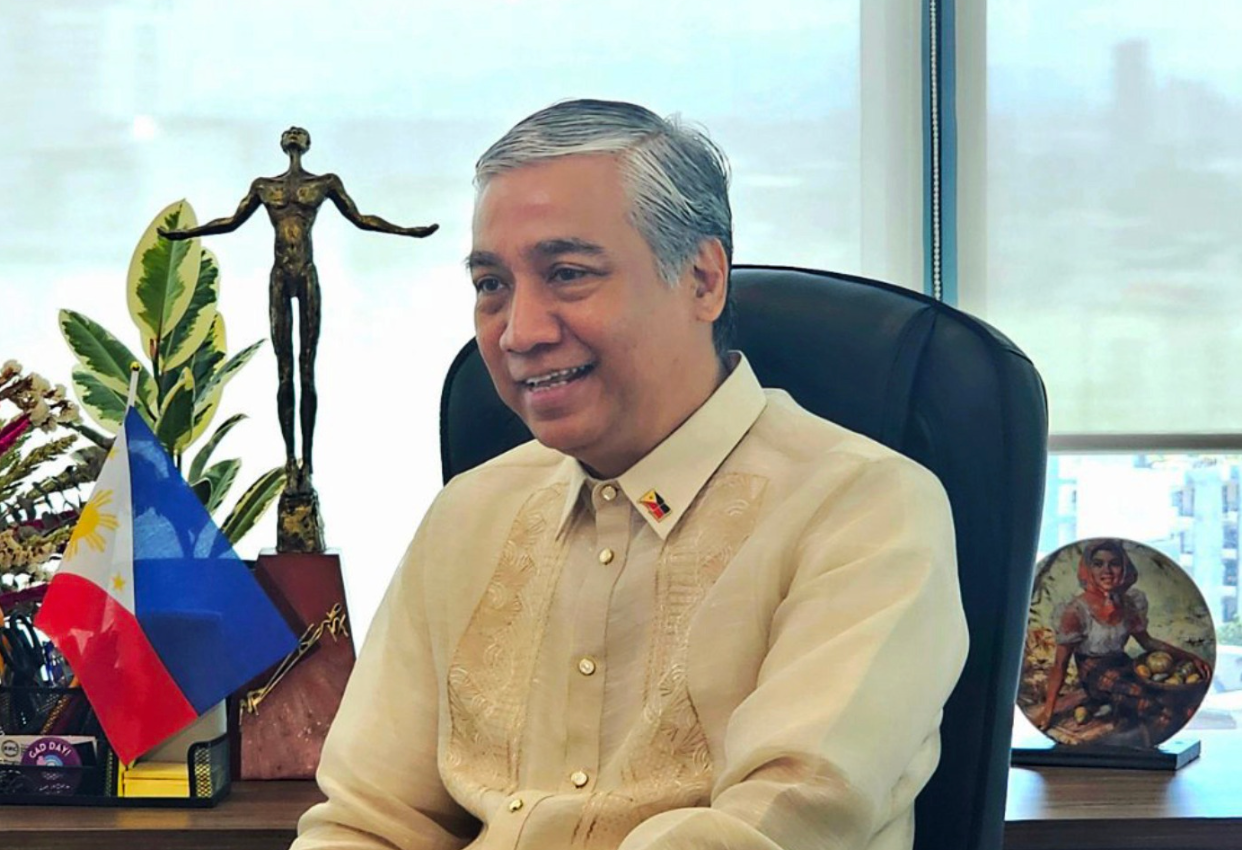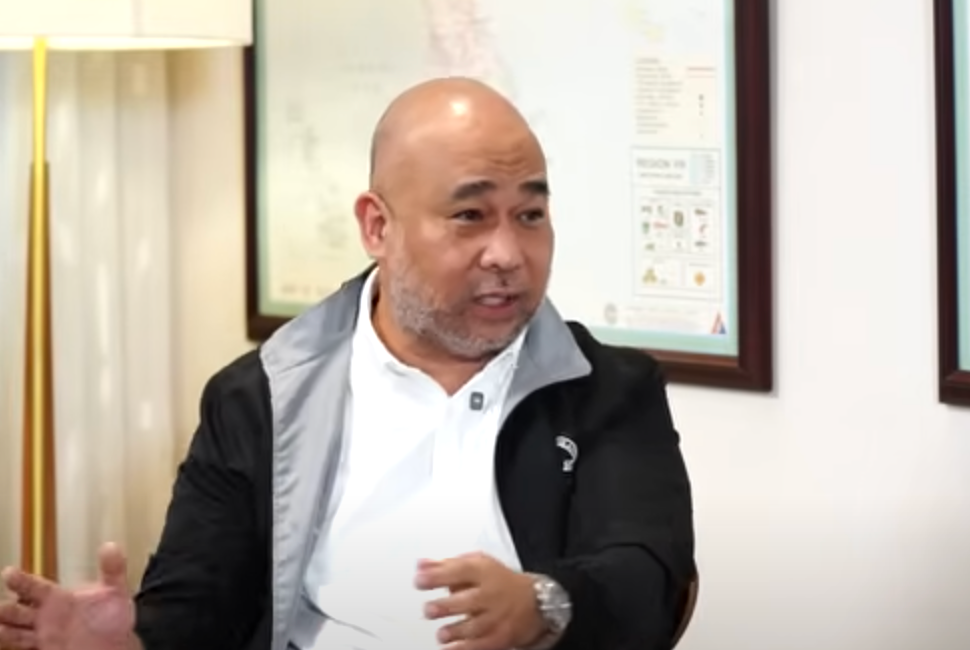News
How to Spot Fake Whiskies(Or How to Protect Your Kidneys and Your Pride)
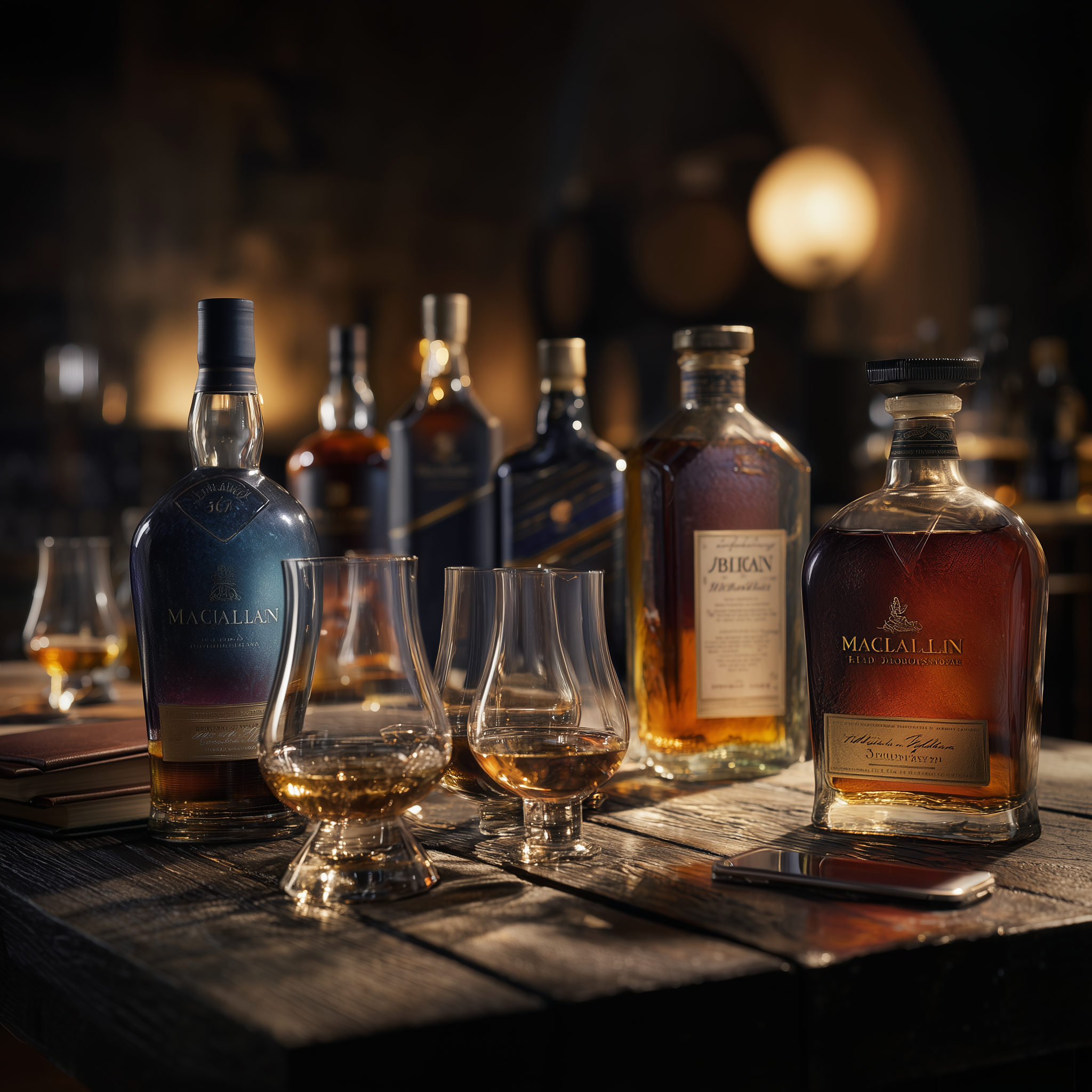
Macallans and Blue Labels have long been staples of the Fellowship. They are symbols of deepening whisky appreciation and, hopefully, a little increase in sophistication, even if we still mispronounce Islay (it’s EYE-luh) or Laphroaig (la-FROYG) along the way. Those bottles sit at the center of our tables, mute witnesses to the banter that gets rowdier with every pour, until one of us starts snoring right at the gathering.
But as these bottles become like family, so too does the risk of encountering fakes, and the counterfeits have become dangerously good. The deception is no longer crude. The bottles look the same. The labels are identical. There are no misspellings. Even the printing, the foil, and the box are all convincing. And so, it’s no longer the buyer’s fault when a fake is unknowingly served among friends. Even when it’s given as a gift, how can you fault the gift-giver? How do you even bring it up? Niregaluhan ka na, aalaskahin mo pa. It’s a touchy topic.
So how do we prevent this betrayal, not just to our pride, but to our kidneys, if what we’re sipping turns out to be nothing more than iced tea mixed with brake fluid? It has gotten so bad that the USPAA President, Gerry Sirios '89 calls it an epidemic. Aghast, he said: “We need to warn the public!”
Macallan: Prestige in a Hologram
1. The Hologram Sticker - Modern Macallan bottles come with a tamper-evident holographic sticker that spans the cap and the bottle neck. It should tear if tampered with. No sticker? Walk away.
2. Scan the QR Code, Then Match the Code - Each hologram includes a QR code. When scanned, it will display a unique alphanumeric code on your phone. This must match exactly the code printed on the sticker. If it doesn’t, the bottle is fake.
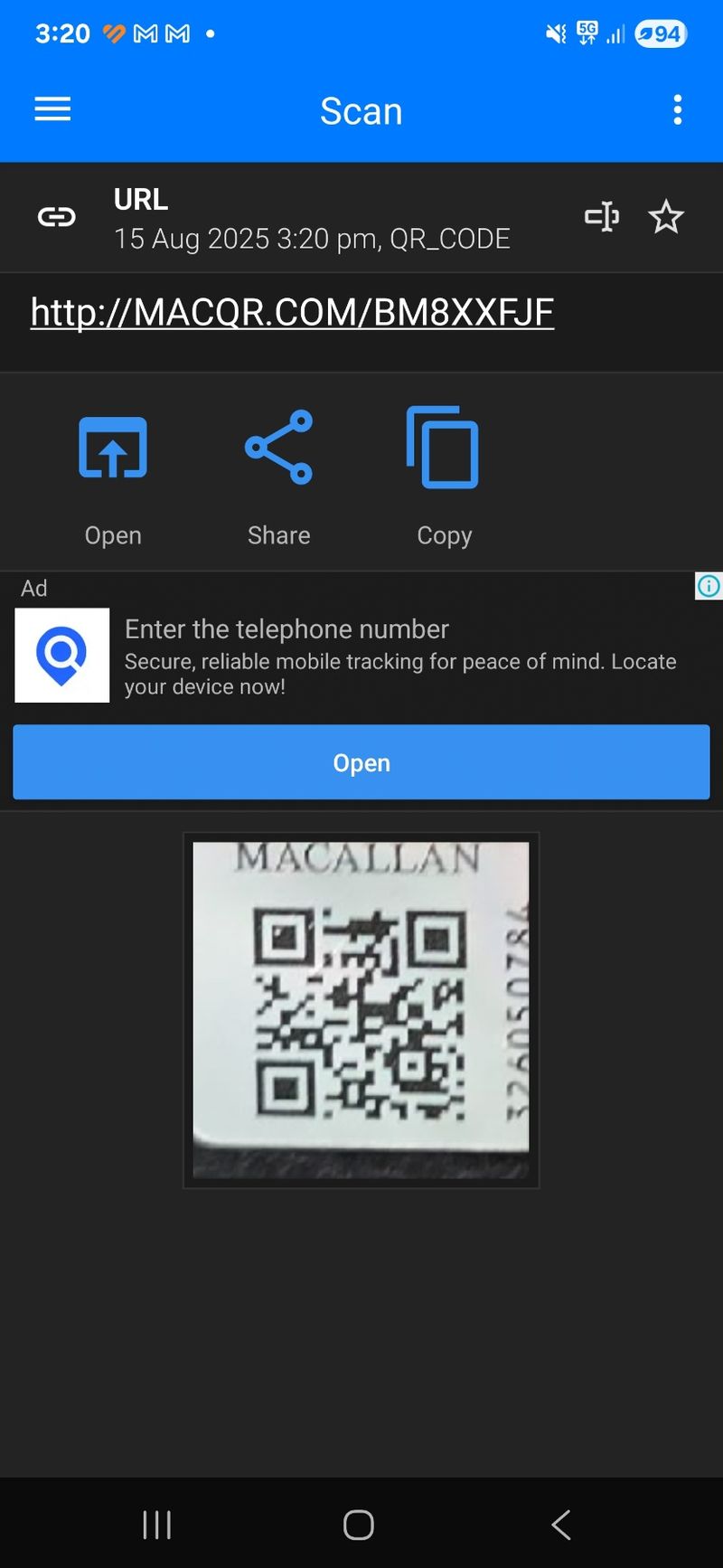
(Image shows the most common alphanumeric output of QR Scanning of fake bottles: BM8XXFJF)
3. Don't Count on Old Tricks - Forget looking for typos, blurry labels, or even the UV-reactive Macallan house. The fakes have caught up. The only reliable test is the hologram + matching code.
4. The Cork Gap Test - Modern Macallan bottles now use a cork-and-seal technology where, once opened, a visible gap forms between the cap and the neck. If you see this gap on a "sealed" bottle, it's been opened. Though refillers have reportedly found workarounds, it's still worth checking.
Johnnie Walker Blue Label: Familiar, Yet Faked
1. The Cap and Seal: It Must Be One Whole Piece - A real JW Blue Label seal is one seamless, tamper-evident strip—machine-applied, hugging both the cap and neck. Fakes often use two-piece seals, loose shrink wrap, or visible glue marks.
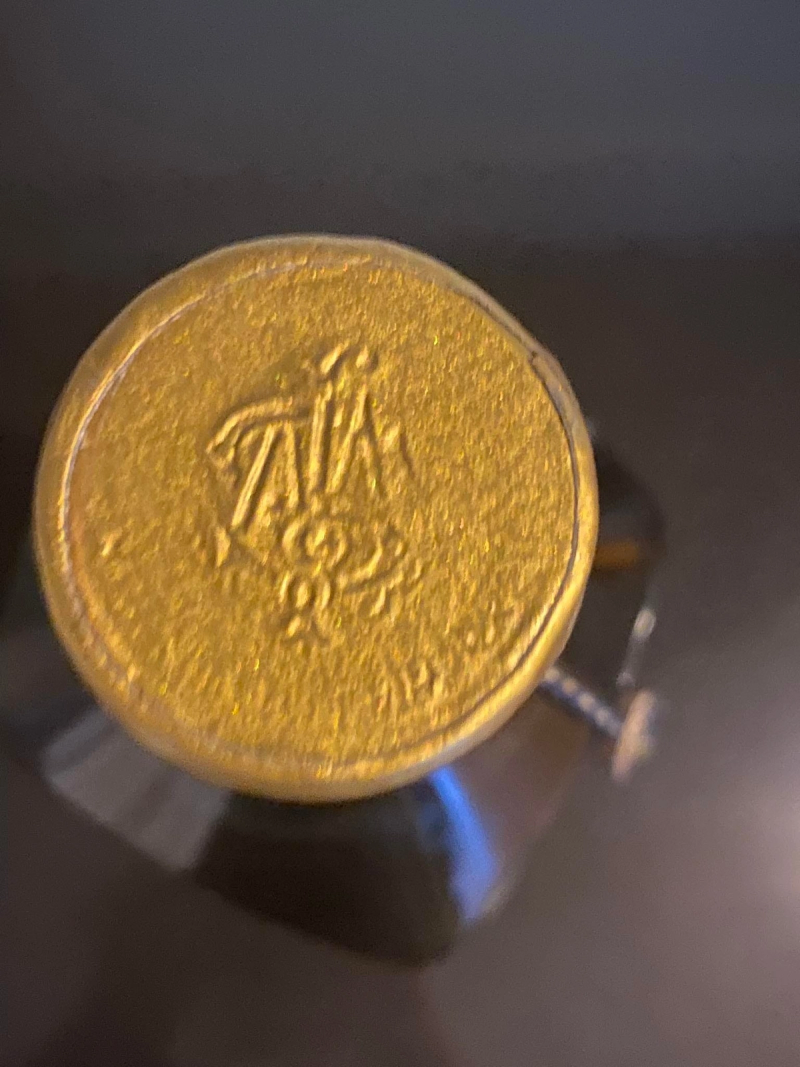
(Look closely at the image; it is not a whole seal. There are two parts, the one on top and the one that goes around the sides.)
2. Check the Serial Numbers and Barcode - Every authentic bottle has:
-An etched serial number on the shoulder or base
-A barcode or QR code on the box that matches the bottle
-A link to Diageo’s verification page when scanned
Serials that don’t match or are missing are red flags.
3. The Label and Finish - Genuine labels are embossed with gold trim and applied with factory precision. Fakes may appear fine in photos but often show flat, peeling, or misaligned labels in person.
4. The Box - Authentic packaging is magnetically sealed, velvet-lined, and includes a certificate of authenticity. Counterfeit boxes use cheap cardboard and poor printing.
Other Bottles at Risk: Hibiki, Yamazaki, and XR 21
Reports from the Whisky WTA Facebook group confirm that Hibiki, Yamazaki, and Suntory Royal XR 21 are now being faked as well—especially in gift boxes and online reselling platforms.
Spotting the Fakes:
-Caps should be heavy and snug, often glass or thick plastic. Hollow, loose-fitting caps are suspect.
-Neck seals should be uniform and factory-tight. Re-glued or wrinkled seals are a bad sign.
-Production codes should appear on the base or label. Their absence is suspicious.
-Gold foil and label alignment should be crisp. Poor registration is often a giveaway.
The Bottle Shake Test (Applies to All Brands)
If you’re still unsure, try this: shake the sealed bottle violently. Authentic whisky, rich with natural oils and esters, will form small, tight bubbles that cling to the glass and dissolve slowly over 10–15 seconds. Fakes—often flavored spirits or diluted alcohol—produce large, fast-dispersing bubbles or none at all. It’s not definitive, but combined with other checks, it's a strong clue.
How the Industry Spots Fakes: Inside Knowledge and Evolving Security
According to Ryan Besido ’96, Brand Manager for White & Mackay at Emperador Inc. (makers of The Dalmore, Jura, Tamnavulin, and Fettercairn), there are now several counterfeit types:
1. Refilled Bottles - The most common form. Real bottles, real packaging, fake liquid. These plague luxury and mainstream corked bottles, as well as Guala-capped blends like JWB 12, Double Black, and Chivas 12. These are harder to detect because they often appear sealed.
2. Full Fakes (Bottle + Liquid) - More common in China, these involve entirely counterfeit packaging and contents. Often seen with Chivas 12 and JWB. Easier to spot but fly under the radar because they’re lower-end, and complaints are rare.
3. New Seal Tech and Code Systems - Major brands now use updated security codes every few years, with features like:
-Unique QR codes with serials that redirect to brand websites
-Laser-etched batch codes on bottle necks or bases
-Secret bottle codes for production tracking and market targeting
-UV-reactive ink, infrared markers, and carton traceability codes
For example, The Dalmore includes a UV strip on the back capsule, hidden infrared ink on cartons, and traceability codes laser-etched below the front label and base. If tampering is suspected, some brands go as far as sending covert teams to markets to buy suspect bottles and analyze them.
On Macallan, Besido adds: even cork tech has evolved. Once opened, the bottle will show a gap between the neck and the cap—a small detail that matters.
The Market Reality: Risk Comes with the Deal
As Besido explains: “The more mainstream the brand, the greater the risk of counterfeit. The real issue is mindset. If you’re sourcing spirits online or through parallel importers—especially when building a collection in Asia—there will always be risks: inconsistent supply, fluctuating prices, and the very real possibility of fakes. We’ve seen counterfeit activity across the region, particularly in high-risk markets like Indonesia.”
His advice: “If you want to eliminate that risk completely, it’s still best to buy from authorized retailers or direct importers. That way, if the bottle turns out to be counterfeit, you have recourse—may habol talaga.”
And more than safety, it’s also about access: “Whisky today is no different from luxury bags, watches, or cars. Brands now invest heavily in CRM systems. If you’re on their radar—meaning you've purchased through proper channels—you become eligible for exclusive events, limited releases, and even private tastings. This tracking applies not just to drinkers but also at the distributor level. The ecosystem is being monitored. It’s a different ballgame now. If you’re buying outside that system, you’re not just risking a fake. You’re missing out on the full experience of being part of the brand’s world.”
Check Before You Pour
These bottles mean something. They’re not just drinks. They mark milestones. They seal friendships. They carry memory.
A fake bottle will not just cause embarrassment. It may even be a breach of trust. So inspect before you pour. Verify before you share. Learn the signs. Spread the word.
About the Author

Javier P. Flores
A Juris Doctor from the University of the Philippines College of Law, he is a partner at the Flores & Ofrin Law Office, with expertise in corporation law, property, and litigation. Beyond the courtroom, Javi has made a name for himself as a publisher and editorial force. He is the co-owner of Milflores Publishing, a multi-awarded publishing house known for producing books that seek to elevate Filipino literature. He also founded League Magazine, a publication that spotlights the best governance practices of local leaders. Javi is also a two-time Master Photographer of the Camera Club of the Philippines. He was a former Associate Editor of the Philippine Collegian, the country’s oldest and longest-running student newspaper. Javi also served two terms on the Board of Editors for the Integrated Bar of the Philippines Law Journal.
